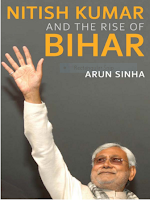A Question
You've sent your messengers, Oh Lord,
Time and again to this pitiless world.
They’ve said, “Forgive,” said “Love, and be kind,
You must wipe hatred off your mind.”
I revere them, bow to them, but in this terrible time,
I’ve sent them back into frosty rime.I’ve seen hidden violence in decaying nights
Has maimed innocents; snuffed out lights.
I’ve seen because of crimes by men with boundless power
Sense of justice cringe and cower.
I have seen a young boy running helpless … in terrible pain,
In distress, hitting his head on wall again 'n again.My voice is choked today, my flute has lost its tune
A moonless night has banished my world to a dark cocoon
I'd like to ask you why?With tears streaming from my eyes,
Those poisoning your air, those erasing every glimmer of light,
Do you love them? Do you forgive their might?
– Rabindranath Tagore
*
Mohammed Afroz, the torturer of 23-year old Jyoti Singh, who will have a permanent place in the conscience of India as “Nirbhaya”, has been set free because when he raped and tortured Jyoti, he was a few months under 18. And to our blind law, anyone under eighteen is a child. A child? A child can rape and torture a girl with such unimaginable ferocity? When the girl was squirming in pain and begging for reprieve, this “child” increased the intensity of torture, pushing an iron rod deeper into her. These are not lurid details concocted by a journalist, this is what Jyoti's male friend, who too was critically injured, told the world.
I do believe there are humans who are beyond the bounds of humanity. I don’t know if they can ever be reformed, but even if they can be, such experiments should be done behind impregnable walls of a prison. Afroz has been set free, he knows that the whole world is against him except for a stupid state government and imbecile do-gooders who are trying to “reform” him by giving him a sewing machine. But if I have any understanding of the human nature, it is just a question of time before Afroz finds another girl and repeats his act. Reform is possible with humans, a leopard doesn’t change its spots.
And it is not about the safety of individual girls alone. Setting Afroz free is a slap on the face of every Indian woman. The people who have conspired to set him free, and the people who have interpreted the law just as a mindless computer would do, didn’t do so because they are magnanimous or meticulous.
I am not a social anthropologist, but I believe that the male dominated Indian society – like many others – still nurtures deep-rooted hatred against women. And the visible progress that women in India have made since independence makes them uncomfortable somewhere deep within. It also makes some of them think that the bitches should be shown their place. Remember the lawyer who defended Jyoti’s rapist(s) said he would burn his daughter if she went out for late-night movies? At the end of the day, our society just doesn’t care for women. Setting free Afroz confirms that fact.
The wave of anger against the decision to set him free for no reason other than the accident of his date of birth is natural. But what can we do? Our only power is to elect a bunch of goons every five years. Do we have any say in our affairs after that?
I went through routine activities yesterday, but inside, I was deeply disturbed. I really didn’t know what to think. But last night, my cousin Subhoreminded me that we Bengalis are fortunate. When everything else fails, we can sit on the shores of a vast ocean called Rabindranath. I began this article with my incompetent translation of a poem by Tagore which is perhaps more relevant today than at any other time.
Kolkata / 22 December 2015











